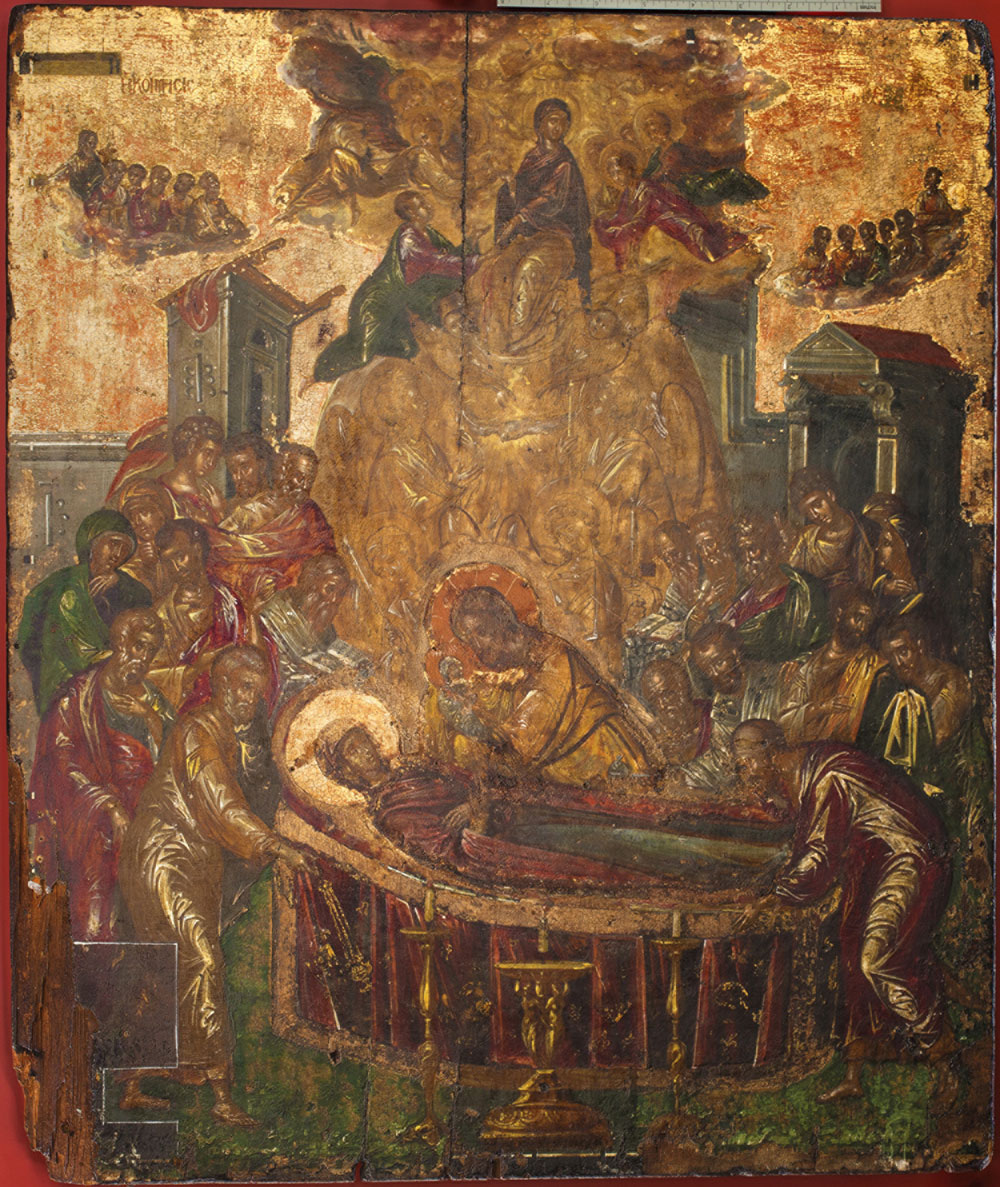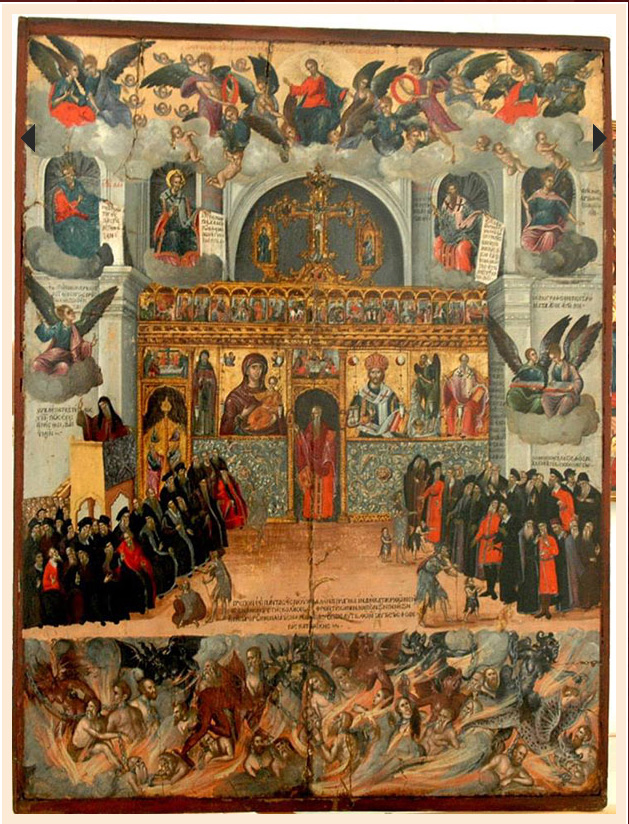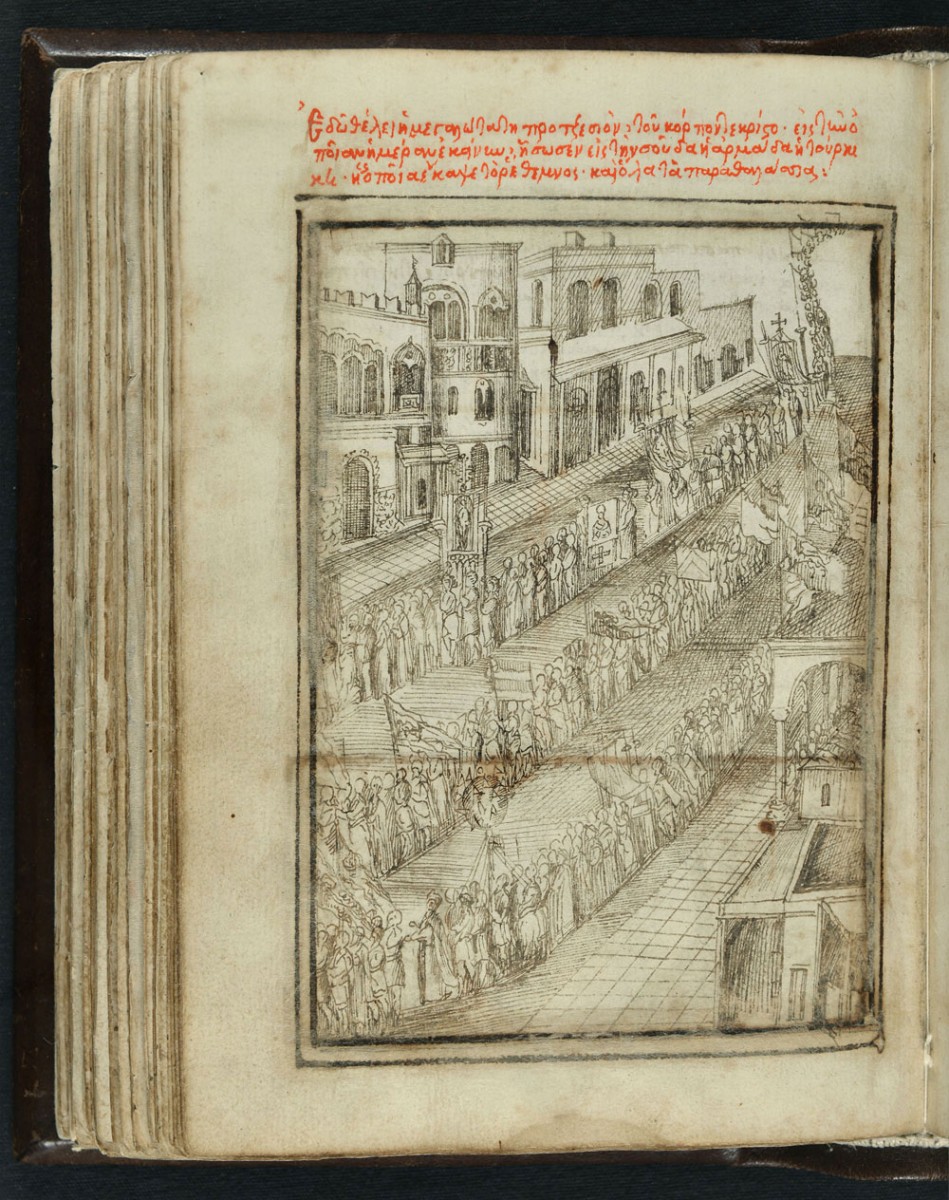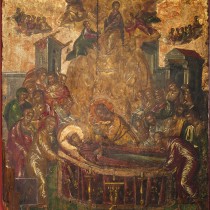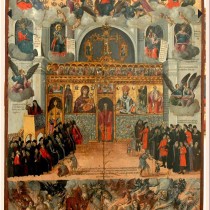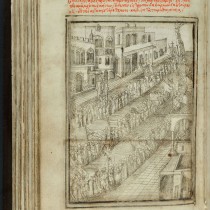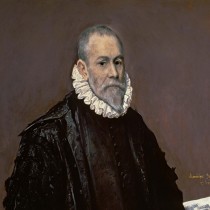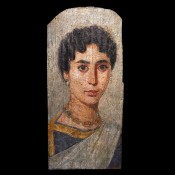The exhibition opening today at the Byzantine and Christian Museum of Athens seeks to shed light on the social and artistic environment of 16th-century Crete, where Theotokopoulos’ personality was formed before he left Candia for Venice in 1567, and to place the painter and his early artistic output in the context of this environment.
The exhibition renders a modern interpretation of the 16th-century Cretan society and the early work of Domenikos Theotokopoulos. Apart from the three works of the artist which belong to his Cretan period (coming from Benaki Museum and the Holy Church of Koimisis tis Theotokou on Syros) unique paintings are presented to the Greek and international audience for the first time.
One of those is the icon of the Cretan painter Georgios Klontzas depicting a sermon from the church of the Holy Archangels Michael and Gabriel in Sarajevo (also known as the Old Orthodox Church of Sarajevo). Thanks to the intensive efforts of the Byzantine Museum and the valuable help of the Greek Embassy in Sarajevo and the presbyter of the church Vanja Jovanović who is also director of the church’s museum, this icon is presented for the first time in a temporary exhibition. It is also the first object of cultural heritage exported to be presented outside the national borders since the establishment of the Bosnia and Herzegovina state. The painting featuring the unique characteristics of Georgios Klontzas’ art depicts the sermon in the interior of a church. It was commissioned to be exhibited in a public space, most probably in a church. It is unknown whether it was meant to be exhibited in Candia or the Adriatic.
Apart from the realistic representation of the sermon, the work conveys a variety of meanings, for instance the mediating role of the Church for salvation, charitableness and the right behavior when attending a sermon. The content of the icon is to be placed in the context of the ideas of that era, when the Catholic Church was asked to support the significance of charity for the salvation of the soul. The icon also reflects the historical reality of a time when an increasing poverty and its consequent social problems had begun to become visible in Cretan cities. This is one of the most important icons in the second half of the 16th century which the visitor will have the chance to admire at close range.
The Chronographia of Georgios Klontzas
Another significant work featured in the exhibition is the Chronographia of Georgios Klontzas, today at the Biblioteca Marciana of Venice. In this codex the history of man, from the expulsion of Adam and Eve from Eden until the Second Coming, is intertwined with the occupation of Christian territories from Ottoman Turks, prophecies for their ultimate defeat and the history of Crete. The iconography determines the narration which is accompanied either by prototype texts or altered fragments of Byzantine and Italian sources. Apart from the folio with the marvelous depiction of the litany on the Day of Corpus Christi in Candia (modern Heraklion), visitors will be able to leaf through the book through a touch screen.
Plotinus’ Enneads
Also for the first time the exhibition presents the codex featuring Plotinus’ Enneads, with the rare iconography and comments of the folios by the Cretan painter Markos Bathas. The manuscript belongs to the National Library of Austria in Vienna. In the exhibition the codex is featured on the folio, where Bathas is depicted creating his self-portrait in his workshop (a rare depiction of an artist’s atelier of the 16th century).
Yet more works, such as the painting “Wedding at Cana” attributed to the workshop of Michael Damaskenos, or objects of luxury household equipment from the Venice Correr Museum, are for the first time presented in Greece.
The Athos loans form another significant contribution to the exhibition, with works such as fragments of an iconostasis by Theofanis Strelitzas-Bathas depicting scenes from the life of Christ (Iviron monastery), and the bifacial icon featuring the Dormition of the Mother of God and the Climax of John Sinaites (Pantokratoros monastery).
Last but not least, a great number of works and archaeological artefacts coming from museums, collections, cathedrals and monasteries of Greece are gathered in this exhibition to offer various narrations on these themes. Unpublished excavation material from regional units of the Archaeological Service, in particular of Crete, shed light to unknown aspects of the social, economic and cultural life of the island during the 16th century and highlight the work and tenuous efforts of the Archaeological Service.
All these features offer a scientific background for the presentation of life and work of Domenikos Theotokopoulos, enrich the thematic units of the exhibition and scientifically support any comparison of the artist’s oeuvre with previous, contemporary or posterior works of his creation.
The exhibition opens today, December 4, 2014 and will last until March 31, 2015.
Venue: Byzantine and Christian Museum, 22 Vas. Sofias Ave., 106 75 Athens.
* The exhibition is part of the Greek programme of events organized for the El Greco Year, commemorating the 400th anniversary of the death of the famous painter.
